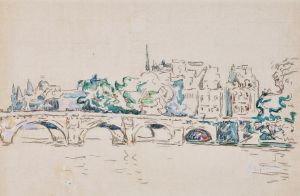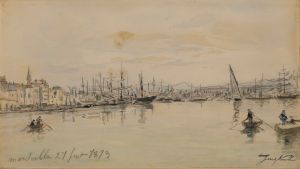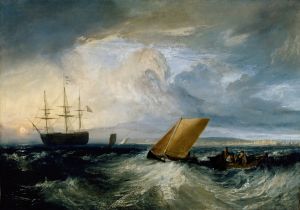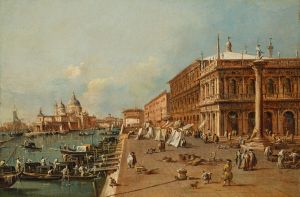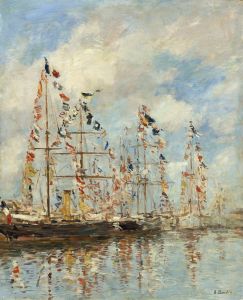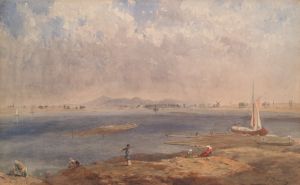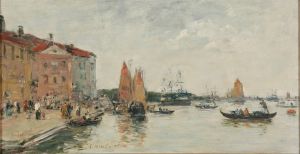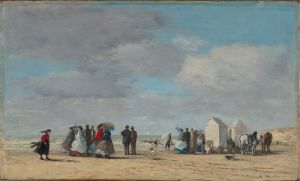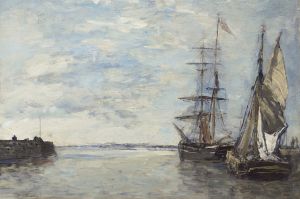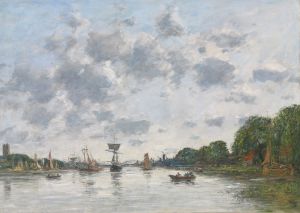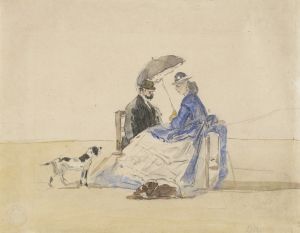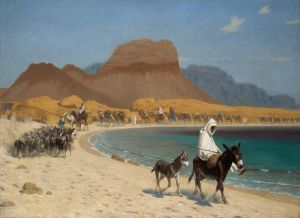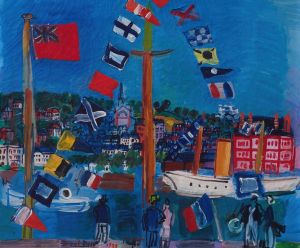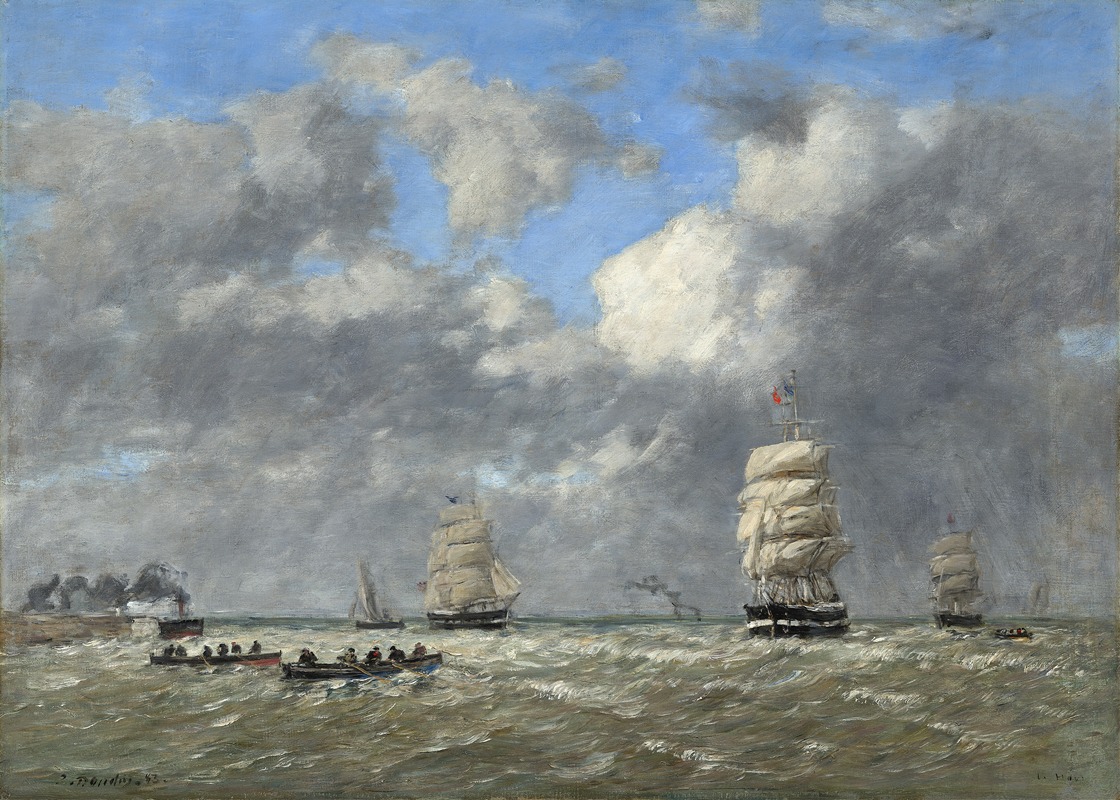
Le Havre
A hand-painted replica of Eugène Boudin’s masterpiece Le Havre, meticulously crafted by professional artists to capture the true essence of the original. Each piece is created with museum-quality canvas and rare mineral pigments, carefully painted by experienced artists with delicate brushstrokes and rich, layered colors to perfectly recreate the texture of the original artwork. Unlike machine-printed reproductions, this hand-painted version brings the painting to life, infused with the artist’s emotions and skill in every stroke. Whether for personal collection or home decoration, it instantly elevates the artistic atmosphere of any space.
"Le Havre" is a painting by the French artist Eugène Boudin, who is widely recognized as one of the precursors of the Impressionist movement. Boudin was born on July 12, 1824, in Honfleur, France, and he developed a keen interest in capturing the transient effects of light and atmosphere, particularly in coastal scenes. His works often depict the beaches, harbors, and skies of Normandy, where he spent much of his life.
The painting "Le Havre" specifically portrays the port city of Le Havre, located in the Normandy region of France. Le Havre was an important commercial and maritime hub during the 19th century, and it provided Boudin with a rich source of inspiration for his maritime scenes. The city’s bustling port, with its ships, docks, and changing weather conditions, offered a dynamic subject for Boudin’s keen observational skills.
In "Le Havre," Boudin captures the essence of the port with his characteristic loose brushwork and attention to the effects of light and atmosphere. The painting likely features elements such as ships anchored in the harbor, the busy quayside, and the expansive sky overhead. Boudin’s technique involves the use of light, airy strokes to convey the movement of clouds and the shimmering reflections on the water, creating a sense of immediacy and liveliness.
Boudin’s approach to painting was influenced by his early exposure to the works of Dutch landscape painters and the Barbizon School, which emphasized painting en plein air (outdoors) to capture natural light and color. His dedication to painting outdoors allowed him to observe and depict the changing conditions of the sky and sea with great accuracy and sensitivity.
Eugène Boudin’s work, including "Le Havre," played a significant role in the development of Impressionism. His focus on natural light and atmospheric effects, as well as his practice of painting en plein air, were influential to younger artists such as Claude Monet, who would later become a leading figure in the Impressionist movement. Monet himself acknowledged Boudin’s influence, referring to him as his "master" and crediting him with teaching him the importance of capturing the fleeting effects of light.
"Le Havre" exemplifies Boudin’s ability to convey the beauty and vitality of the natural world through his masterful handling of light and color. His paintings are celebrated for their ability to evoke the feeling of a specific moment in time, capturing the ephemeral qualities of the environment with a delicate and nuanced touch.
Today, Eugène Boudin’s works, including "Le Havre," are held in high regard and can be found in major art museums and collections around the world. His contributions to the art world have cemented his legacy as a pivotal figure in the transition from traditional landscape painting to the innovative approaches of the Impressionists.





